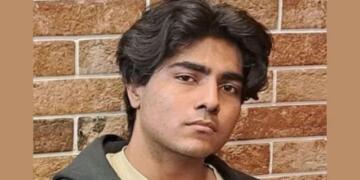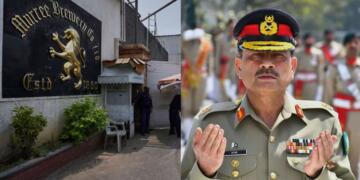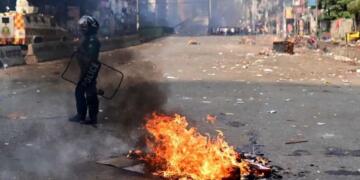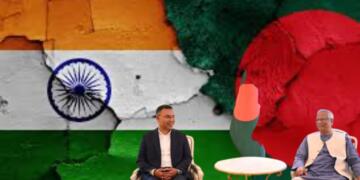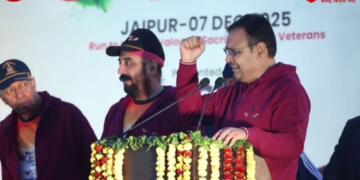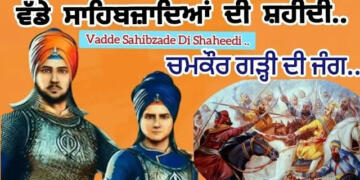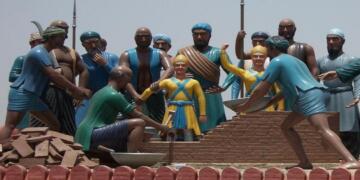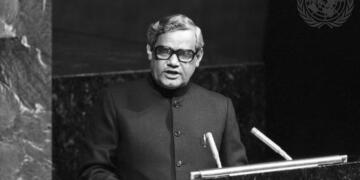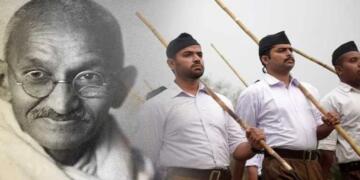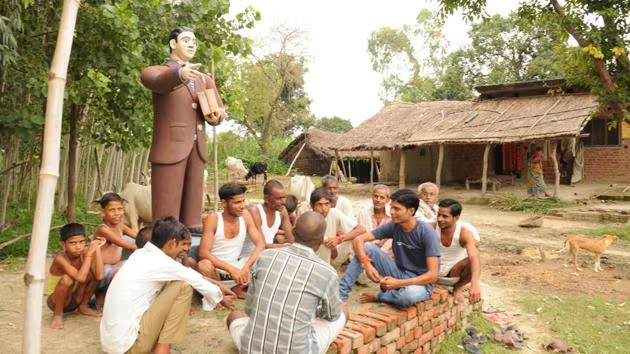Journalist and activist Dilip Mandal who once was an integral part of the ecosystem that manufactured and propagated the sham ‘caste atrocity literature’, has got a major change of mind. He has now turned towards the path of debunking the myths propagated by the atrocity literature that operated with a definite goal of creating rift within the Hindu society and serves the long standing purpose of eradicating Hinduism.
Dilip Mandal since a few days has been working to hammer down the bogus literature he was once part of making. On the 9th of January, he came out with a shocking revelation and confessed Fatima Sheikh, whom the Islamo-Leftist circles revere as India’s first Muslim school teacher who fought ‘atrocities’ committed by the ‘Brahmanical forces’, is nothing but a fictional character created by him. He revealed that the name and character were fabricated by him for narrative purposes.
Dilip Mandal has again come up to bluntly attack the ‘atrocity literature’ listing down the concerning consequences it has upon any stable society. In his tweet which embarked with the headline “Overcoming Atrocity Literature, Reclaiming Past Glory, and Moving Ahead to a Great Future”, he remarked that India must rise above the burden of atrocity literature, which often traps nations in cycles of real or imaginary guilt. He asked the people of India to not wander around inconvenient Historical pasts and divisive narratives but to celebrate the country’s glorious achievements.
He writes, “No civilization can reclaim its past glory or stride confidently into the future if it remains, or is forced to remain, trapped in real or/and imaginary guilt. This is a deliberate strategy or plan often employed by opponents who aim to weaken and bog down a society or a Nation. Atrocity literature is one such trap. Every civilization has its bright and dark shades”
“There are no longer slave markets in Europe or America, nor in the Muslim world, selling human beings and young girls as commodities. Yet, no one constantly lectures Western civilizations about slavery, nor does anyone incessantly question the Muslim world about its history of slave markets and other horrors and atrocities against women. They continue practices such as the burqa, religion-approved child marriage, and polygamy with up to four wives. We are always better and more humane than them. We never defend and deny our past mistakes”, he further added.
Moreover, Dilip Mandal candidly acknowledged that OBC communities have not historically faced caste discrimination or untouchability. He urged them not to fall into the trap of atrocity literature, which falsely claims that their ancestors endured severe atrocities at the hands of Upper Caste Hindus.
“And to my fellow OBCs: untouchability is not a part of your historical experience. Your forefathers never faced it. Do not fall into the trap of absurd narratives. Remember, you were once the rulers and warriors of this land. Dr. B.R. Ambedkar himself established this truth in his seminal work, Who Were the Shudras? Let’s get rid of atrocity literature collectively” he wrote.
What is Caste Atrocity Literature?
Caste Atrocity Literature is a propaganda tool crafted by minds driven by Hinduphobic bias. The contrived literature tries to create a rift between the different sections of the Hindu society for their vested socio-political goals. Caste Atrocity Literature falsely points out at the grave atrocities and caste discrimination, members from certain caste groups called Dalits have faced at the hands of upper caste Hindus. The Caste Atrocity Literature aims to demonise the Brahmin community and claims that it was Brahmins who did not allow the members of the Dalit community to get hold of education and also denied them basic Humane treatment like drinking water. The literature moreover claims that the inhumane practises against the Lower Castes that is SCs and STs continues to be practised in contemporary times by the Upper Castes.
The Caste Atrocity Literature stretches itself to new depths and new weaved stories like that of Upper Caste Hindus not allowing the lower caste Hindus to drink water, Upper Castes Forcing the lower-caste women in Kerala to pay tax for covering their breasts. The OBC community too have been included in the recent years in the list of the ‘Atrocity Literature’.
The OBC community is being led to believe that they endured severe torture and discrimination at the hands of casteist Hindus. This narrative appears to be a strategic move to mobilize a significant portion of OBC votes in electoral politics, as they constitute 44% of the Hindu population. No wonder why we hear Samajwadi Party Chief Akhilesh Yadav categorizing the Yadav community as ‘Shudras’ and Tejasvi Yadav confronting the General Class Hindus for not letting the lower caste ‘drink water’ for so many years.
The Caste Atrocity Literature was invented out of the minds of the British who sought to divide the Hindu society in order to have a smooth administration with the locals divided. The tool was then adopted by the colonised brown sahebs who more or less had the same bias against Hinduism and the indigenous culture of India. The Islamo-Leftist alliance took the burden of propagating and taking forward the hazardous tool invented by the British administration to curtail the Hindu community.
Nehruvian Marxists and Aligarh school Historians did their part by including the propaganda of Caste-Discrimination and Untouchability as part of the History textbooks without doing much effort to go down deep at the subject and provide a crystal clear picture. And today, the bogus literature which has got no evidence to back the atrocity claims is being widely used by the Islamo-Leftist lobby to meet their ideological as well as political ends.
Joining these Hinduphobic narratives are politicians who have eagerly jumped on the bandwagon to further their political careers, even at the cost of undermining the very society that has sustained them. Political Parties like Dravida Munnetra Kazhagam (DMK), Rashtriya Janata Dal (RJD) , Samajwadi Party (SP), Aazad Samaj Party (Kashi Ram) in recent years have based their entire politics at the premise of ‘Caste Atrocity Literature’.
Ironically, caste atrocity literature is being used as a tool by political parties that have long thrived on caste-based politics. The DMK has, for years, subjected Tamil Brahmins to severe persecution, forcing many to leave the state and migrate. In Bihar and Uttar Pradesh, the RJD and Samajwadi Party have sustained their political base through Yadav-Muslim alliances while perpetuating discrimination against upper-caste Hindus. The infamous slogan “Bhura Baal Saaf Karo,” which called for the genocide of upper-caste Hindus, including Brahmins, Bhumihars, Rajputs, and Kayasthas, remains a dark chapter in Indian politics, gaining prominence during RJD rule in Bihar. The Aazad Samaj Party (Kashi Ram), led by Chandrashekhar Ravan, has built its political campaigns around criticizing Brahmins, upper-caste Hindus, and Hinduism, focusing on a Dalit-Muslim alliance to secure electoral gains.
How far does Caste Atrocity Literature hold Truth?
The British and Islamo-Leftist historians, in their attempt to obscure historical truths and promote caste atrocity narratives, have often created fictional stories that lack any real basis in fact. These concocted tales are not grounded in historical evidence but are instead products of ideological agendas aimed at distorting the past. Despite having no factual foundation, these narratives gain traction due to their repeated citation across various sources. This repeated referencing by the same ecosystem creates the illusion of academic legitimacy, and over time, these fabrications begin to be accepted as historical truth.
The Islamo-Leftist intellectual community, often relying on tertiary sources, has played a pivotal role in manufacturing these myths. Tertiary sources, which frequently cite one another’s works without direct reference to primary or even secondary historical records, create a self-reinforcing cycle that lends falsehoods an air of credibility. By continuously recycling these narratives, they are woven into the fabric of historical discourse, making it more difficult to differentiate between fact and fiction.
Historian Dharampal’s ‘A Beautiful Tree’
Historian Dharampal in his book ‘A Beautiful Tree’ which was published in 1983 cited data which dated back to colonial times and crumbled down many of the historical myths regarding the caste atrocities suffered by the lower castes at the hands of Upper divisions. He also annihilated the myth of lower castes getting exposed to education.
In The Beautiful Tree, Dharampal’s findings challenge the colonial portrayal of caste in pre-colonial India, asserting that the caste system was more flexible and less rigid before British intervention. He presents evidence that social mobility and caste interactions were common, particularly in rural areas, where the caste system functioned more fluidly. Historian Dharampal accused the British administration of institutionalizing caste divisions, making them more rigid through administrative categorization and legal frameworks.
Dharampal also highlighted the fact that education in pre-colonial India was decentralized and accessible to people across castes, including lower castes, which contrasts with the colonial narrative that education was restricted to upper castes. He cites historical records indicating that education was widespread, with local schools teaching practical knowledge and literacy, and estimates suggest that 80% of the Indian population was literate in the 18th century, particularly in village schools.
This literacy was not confined to higher castes, but extended to artisans, peasants, and even lower caste groups. Thus, Dharampal argues that the caste system was less oppressive and more inclusive of education before the British established their colonial policies, which sought to control and rigidify caste distinctions for administrative convenience.
Paper by Sophia Pathan and Dulkin Jalki
Researcher Sophia Pathan along with Dulkin Jalki too in their research paper published in 2017 dismantles many of the myths covering the subject of caste atrocities in India. The research paper titled ‘Are There Caste Atrocities in India? What the Data Can and Cannot Tell Us’ critiques the conventional understanding of caste violence in India, specifically the idea that the caste system inherently produces widespread violence and atrocities, particularly against lower castes. Drawing on data from the National Crime Records Bureau (NCRB), the paper argues that while there is significant documentation of crimes against Scheduled Castes (SCs), these figures may be misleading when interpreted as evidence of caste-based atrocities.
Sophia Pathan and Dulkin Jalki examine the NCRB data for 2011, which shows 33,719 crimes against SCs, but points out that this constitutes only 0.53% of all reported crimes, despite SCs comprising 16.6% of India’s population. This suggests that SCs experience fewer crimes relative to their population than other groups. The article challenges the methodology used in caste studies, where all crimes against SCs, including those covered by special laws, are labeled as “caste atrocities.” It questions whether crime data alone can truly represent the extent of caste-based oppression, urging a more nuanced understanding of the issue beyond sensational statistics. This pointing of harsh fact by Sophia Pathan and Dulkin Jalki through proper statistics also spots the light upon the draconian SC-ST Act which is often used as a shield to falsely accuse Upper Castes.
Popular myths used to support Caste Atrocity Literature
Fatima Sheikh
Dilip Mandal recently exposed the myth regarding Fatima Sheikh, a figure long revered in certain circles as India’s first Muslim school teacher. In a tweet on January 9, Mandal stated categorically that Fatima Sheikh never existed and was a fictional character created by him for narrative purposes. In his post titled “Confession,” he admitted to fabricating the name and character, explaining that there were no historical records or reliable references to her existence prior to 15 years ago.
Mandal pointed out that her name is missing from the writings of prominent figures like Jyotiba Phule, Savitribai Phule, and Dr. BR Ambedkar, who were supposedly her colleagues. Additionally, no British documents, Muslim scholars, or historical texts from the era mention her. Mandal challenged critics to provide evidence of her existence prior to 2006, asserting that such claims would disprove his confession.
The book ‘Women Writing in India: 600 B.C. to the Early Twentieth Century’ published in 1991 briefly mentions her as a colleague of the Phules but offers no further details about her contributions which holds the claim made by Dilip Mandal.
Breast Tax
The story of ‘Breast Tax’ is another historical myth propagated by the Islamo-Leftist ecosystem to falsely showcase casteism inside the Hindu society and demonise the upper caste Hindus for vested ideological interests. The story claims that lower-caste women in Kerala were forced to pay a tax for covering their breasts, with Nangeli, an Ezhava woman, protesting by mutilating herself. However, historical records provide no evidence of such events. Kerala’s traditional attire, influenced by its tropical climate, featured minimal clothing regardless of caste or gender. Historical accounts, including those by Dutch traveler William Van Nieuhoff and Indian scholar L.K. Anantha Krishna Iyer highlights that even upper-caste women, including royalty, commonly left their bosoms uncovered, contradicting claims of caste-based humiliation.
Bhima Koregaon Battle
The Bhima Koregaon battle is often intentionally misrepresented as a conflict between Dalits and upper castes Hindus by the Hinduphobes to deepen caste lines among Hindus for political benefits. Bhima Koregaon battle is often narrated as a victory of Dalits over Peshwas who were Brahmins. However, the historical facts suggest otherwise. The battle, fought in 1818, was between the British and the Marathas, not a Dalit vs Brahmin confrontation. The British forces, which included Mahar soldiers, did not see the Mahars as leaders but as foot soldiers.
The British retreat from the battle was portrayed as a victory, but it was, in fact, a failure for the British, who had to abandon their mission. The Mahars, part of the British Army, did not fight for a Dalit cause but as part of the British forces. Additionally, British colonial policies later relegated Mahars and other lower castes to menial roles and even stopped recruiting them in the army by 1892. The idea that the battle symbolized Dalit militancy contradicts the traditions of the Mahars, who fought alongside Shivaji’s forces and were integrated into the broader social fabric of Maratha society.
This malicious narrative, often rooted in exaggerations and lies, perpetuates harmful stereotypes and undermines social cohesion. Breaking India forces, backed by foreign interests, exploit these divisions to destabilize India. The public have now become extremely aware of the intentions of these lobbies that seek to drive deep wedges in the social fabric of the country. The fake narrative of caste atrocity literature now lies completely exposed.


